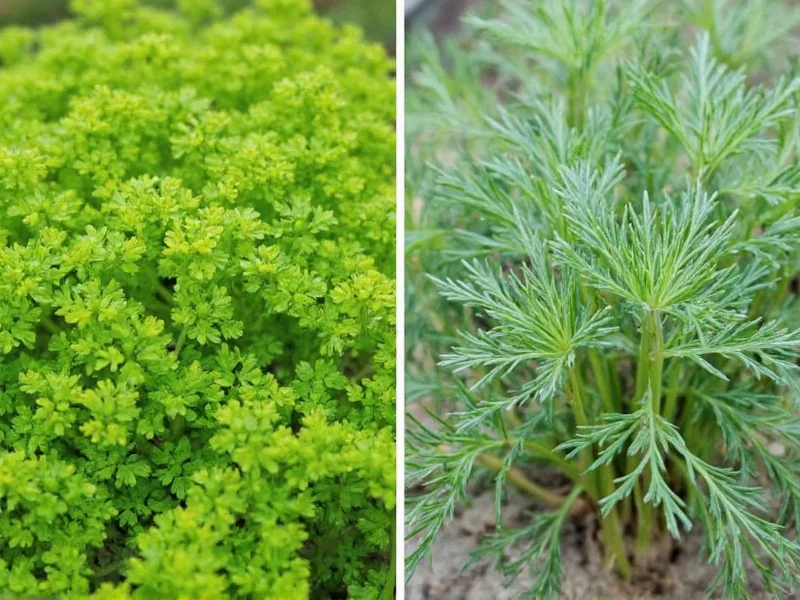Understanding the distinction between dill seeds and dill weed is essential for home cooks and culinary enthusiasts who want to achieve authentic flavors in their dishes. Though they come from the same plant (Anethum graveolens), these two ingredients serve different purposes in the kitchen and cannot be used interchangeably without recipe adjustments.
What Exactly Are Dill Seeds?
Dill seeds form when the dill plant flowers and produces small, oval-shaped fruits. These seeds start green and immature, then mature to a light to medium brown color. Harvested in late summer, dill seeds contain essential oils that give them their distinctive flavor profile.
The flavor of dill seeds is warm, slightly citrusy, with subtle notes of caraway and anise. They're significantly more potent than dill weed, with a concentrated, earthy taste that stands up well to long cooking times. This makes them ideal for pickling, breads, and spice blends where their robust flavor can permeate throughout the dish.
Understanding Dill Weed: The Fresh Herb
Dill weed refers specifically to the feathery leaves and tender stems of the dill plant before it flowers. When people talk about fresh dill, they're referring to dill weed. The term "weed" in this context is botanical terminology, not a judgment of quality.
Fresh dill weed has a delicate, grassy flavor with subtle lemon and celery notes. Its flavor is much more subtle than the seeds and diminishes significantly when dried. Fresh dill works best as a finishing herb added at the end of cooking to preserve its bright flavor and vibrant green color.
Key Differences Between Dill Seeds and Dill Weed
The most critical distinction between these two ingredients lies in their flavor intensity, chemical composition, and culinary applications. Understanding these differences prevents recipe failures and helps you make informed substitutions when necessary.
| Characteristic | Dill Seeds | Dill Weed (Fresh) |
|---|---|---|
| Plant Part | Mature fruit (seeds) | Leaves and tender stems |
| Flavor Profile | Warm, earthy, citrusy, with caraway notes | Grassy, fresh, subtle lemon-celery notes |
| Flavor Intensity | Strong, concentrated (3-4x stronger than weed) | Delicate, subtle |
| Best Used In | Pickling, breads, spice rubs, cooked dishes | Fresh salads, dips, fish, finishing touch |
| Storage Life | 2-3 years (whole seeds) | 1-2 weeks refrigerated (fresh) |
| Substitution Ratio | 1 tsp seeds = 1-2 tbsp fresh dill | 2-3 tbsp fresh = 1 tsp seeds |
When to Use Each: Culinary Applications
Choosing between dill seeds and dill weed depends on your recipe's requirements and the flavor profile you want to achieve. Understanding proper usage prevents disappointing results in your cooking.
Dill seeds shine in:
- Pickling recipes (cucumbers, beets, eggs)
- Bread recipes, particularly rye and sourdough
- Spice rubs for meats, especially salmon and pork
- Long-simmered dishes like stews and soups
- Commercial spice blends like celery salt
Dill weed excels in:
- Fresh salads and salad dressings
- Dips like tzatziki and ranch dressing
- Finishing touch for fish dishes
- Scrambled eggs and omelets
- Vegetable dishes, particularly potatoes and cucumbers
Substitution Guidelines: Making the Switch
When you find yourself without the specific form of dill called for in a recipe, proper substitution becomes necessary. However, understanding the dill seeds vs dill weed substitution ratio prevents flavor imbalances.
For dill weed vs dill seeds substitution, remember that seeds are significantly more potent. As a general rule:
- 1 teaspoon dill seeds = 1-2 tablespoons fresh dill weed
- 1 tablespoon dried dill weed = 1 teaspoon dill seeds
When substituting dill seeds for fresh dill weed, use approximately one-third the amount. For example, if a recipe calls for 3 tablespoons fresh dill, use just 1 teaspoon of dill seeds. Adding too much dill seed can overwhelm a dish with its stronger, more pungent flavor.
Conversely, when substituting fresh dill for seeds, you'll need to use more volume but be aware that the flavor profile will be noticeably different—brighter and less earthy.
Storage Recommendations for Maximum Freshness
Proper storage extends the shelf life and preserves the flavor of both dill forms. Understanding how to store dill seeds versus dill weed ensures you get the most from your ingredients.
For dill seeds: Store in an airtight container away from light and heat. Whole seeds maintain their potency for 2-3 years, while ground dill seeds lose flavor within 6-12 months. The cool, dark environment of a pantry works well for seed storage.
For fresh dill weed: Treat it like other delicate herbs. Trim the stems, place in a glass with an inch of water, cover loosely with a plastic bag, and refrigerate. Change the water every few days. Properly stored, fresh dill lasts 1-2 weeks. Alternatively, freeze fresh dill in ice cube trays with water or oil for longer storage.
Avoiding Common Culinary Mistakes
Many home cooks make critical errors when using dill seeds and dill weed interchangeably without considering their fundamental differences. Recognizing these pitfalls improves your cooking results significantly.
One frequent mistake involves using dill seeds in recipes that call for fresh dill without adjusting the quantity. This results in dishes that taste overly pungent and lack the bright, fresh notes expected. Another common error is adding fresh dill too early in the cooking process, causing it to lose its delicate flavor.
When making pickles, some cooks mistakenly use fresh dill weed instead of dill seeds, resulting in less flavorful pickles that don't develop the characteristic dill pickle taste. For authentic dill pickles, dill seeds provide the traditional flavor profile, though many recipes combine both seeds and fresh dill for complexity.
Understanding the difference between dill seeds and dill weed in recipes prevents these common kitchen disappointments and helps you create dishes with balanced, authentic flavors.











 浙公网安备
33010002000092号
浙公网安备
33010002000092号 浙B2-20120091-4
浙B2-20120091-4